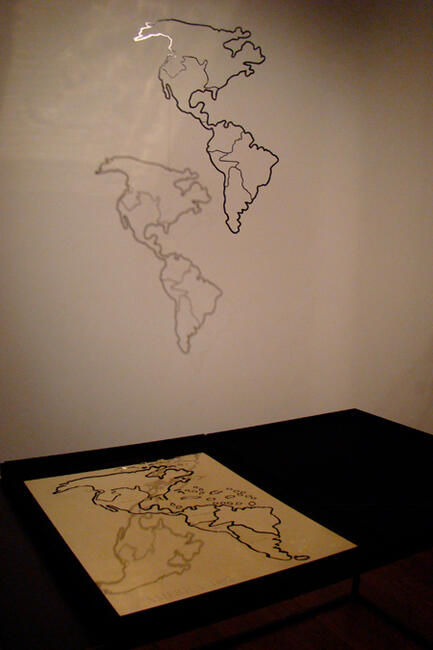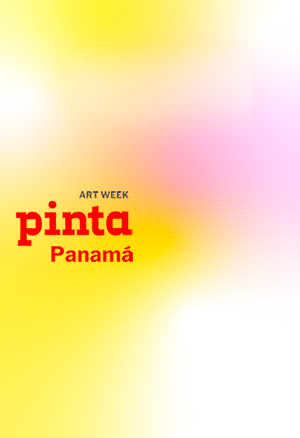Ana Mercedes Hoyos
Alonso Garcés Bogotá
For several decades now, Ana Mercedes Hoyos has focused her attention on the cultural influence that a social minority, in particular the one of San Basilio de Palenque, can exert on our national identity as Colombians.

Circumscribing her observation to the role of women in this society, the artist embarks on a long process by inquiring into the balance with which these women carry trays of fruit on their heads, fruits that also reveal a spatial and chromatic balance.
Her observations of this social group are not restrained to this aspect; she portrays the market, its processions, the outfits, through a look in which the photographic approach plays a leading role. Far from rendering realistic representations, Hoyos interprets this world of objects as rigorous geometric compositions in which the different atmospheres are enhanced. In this exhibition she features the ribbons that tie up the dresses of the palenqueras during processions, shown against silver-colored planes. Arranged in a strictly linear order and all of them facing one another, they form a corridor − in which the spectators may feel they are part of the procession − on one of whose ends we find a map of America showing the Viceroyalties into which the Spanish colonies were divided, and on the other, a painting in gold of some kind of chain links which refers, beyond the religious rite, to the issue of the existence of a population of African origin in a geographic location so remote from their continent. In a metaphor which I interpret as the possibility for this procession to exist − besides being a cultural manifestation − due to the promise of riches to be found in South America, in particular silver, which for several centuries promoted slave trade and the transportation of slaves to our lands.
Already focused on a particular historical questioning, the artist presents, in the second gallery space, a series of naturally polished bronzes on which four symbols are recognizable: the map of America, the ribbon of a procession dress, the head of a colored woman, and an enigmatic profile of a boat, inspired by an eighteenth century engraving, which shows the way in which slaves were brought to America, and which paradoxically served as abolitionist flag at a given time. All of them are suspended from the ceiling by different kinds of chains. These dimly illuminated objects acquire a sacred character, through which the artist appears to hint at the importance of the fact that this “black gold, transported by caravels across the ocean” − in the words of Luis-Martín Lozano − today is, paradoxically, one of the few Colombian cultural traditions to have been elevated to the category of immaterial Patrimony of Humanity.
A fact that transforms this exhibition into a paradox of the false legend of El Dorado, which led to 10 million people descending to hell when uprooted from the dark beauty of their native continent, as expressed by the US sociologist William E. B. DuBois.





